Rodent Repellent Indoor Ultrasonic Plug-In for Home, Attic, Garage, Warehouse (1 Pack)
$32.99
Quiet the scurry without sprays or sticky mess. This Rodent Repellent Indoor Ultrasonic plug-in projects sweeping high-frequency sound that helps make rooms less comfortable for mice and rats, and it works best alongside smart basics like sealing gaps and tidying food sources. Use one unit per enclosed room with a clear line of sight into the space, since ultrasound does not travel through walls. In the United States, reputable devices list an EPA Establishment Number on the label so you know the production site is registered.
Description
If you are losing sleep to scratching in the walls or droppings in the pantry, the Rodent Repellent Indoor Ultrasonic Plug-In for Home, Attic, Garage, Warehouse offers a simple, plug-in way to discourage pests without sprays or traps. It emits high-frequency sound that targets how rodents and other wildlife sense their environment, and it is best used as part of a clean-up and seal-up plan so you reduce food access and close entry gaps for more dependable results.
Key Customer Benefits
- Chemical-free peace of mind at home. This ultrasonic rodent repellent plugs in and runs without baits or poisons, which helps you reduce risks around kids and food prep areas while you tighten up sanitation and sealing. In the United States, these are regulated as “pesticide devices,” not pesticides, and reputable units list an EPA Establishment Number on the label so you know where they were made. That transparency builds trust while you use the device as part of an integrated pest management plan.
- Targets how mice and rats sense the world. Rodents hear well above the human range. Studies show mouse hearing extends from roughly 1 kilohertz up to about 90 to 100 kilohertz. Ultrasonic output in that band can disrupt how rodents communicate and navigate indoors when the sound has a clear path. That is why placement in open rooms and near likely entry routes matters.
- Simple, always-on deterrence that complements traps and sealing. Experts consistently recommend using ultrasonic repellers as a supporting tool, not a stand-alone fix. When you combine continuous ultrasound with cleaning, food storage, exclusion, and trapping, you create layered pressure that helps push activity down faster and keep it down longer.
- Quiet for most adults, considerate for pets. Ultrasound is generally above what adults can hear, so operation is typically unobtrusive. However, some devices include lower frequency settings that younger people may notice, and small pet mammals like hamsters, gerbils, and rabbits may be disturbed. If you keep pet rodents, place units away from those enclosures or choose a different approach for that room.
- No mess and almost zero maintenance. There are no glue boards to check and no bait blocks to replace. For best performance, keep the device in a clear outlet, not behind curtains or furniture, since soft materials can absorb ultrasound and hard obstacles can block it. That small placement detail makes a noticeable difference in coverage.
- Helpful for kitchens, garages, and attics where sound can travel. Open, hard-surface rooms let ultrasound reflect and fill the space more effectively than cluttered, soft-furnished rooms. Positioning units to project across doorways or known runways improves the chance that rodents encounter the sound field as they enter.
- Honest expectations, fewer surprises. Independent reviews and municipal guidance note that results can vary by species and environment, and rodents may acclimate if you rely on ultrasound alone. Setting the right expectation protects your time and budget and helps you focus on the fundamentals that always work: finding entry holes, eliminating food access, and trapping when needed.
Product Description
What this plug-in actually is
This Rodent Repellent Indoor Ultrasonic Plug-In for Home, Attic, Garage, Warehouse is a compact, always-on device that uses high-frequency sound to make target areas uncomfortable for pests. In the United States, products like this are classified as pesticide devices.
That means they must be produced in a registered establishment and the label should show an EPA Establishment Number. Unlike chemical pesticides, there is no EPA Registration Number because the agency does not pre-approve device efficacy claims the same way it does for active ingredients. When you shop, the establishment number is your basic compliance checkpoint.
How ultrasonic deterrence works
Mice and rats hear far above what we hear. Human hearing typically tops out near twenty kilohertz, while laboratory data show mice and rats detect sounds well into the ultrasonic band, often reported up to roughly eighty to one hundred kilohertz depending on species and age.
By placing a small transducer in your outlet, the device projects high-frequency waves that can disrupt how rodents communicate and explore indoor spaces. The concept is simple, yet very sensitive to physics. Ultrasound loses strength with distance, it reflects off hard surfaces, and it is quickly absorbed or blocked by curtains, insulation, and clutter. This is why placement in a clear line of sight to the area you want to protect matters so much.
What makes it effective, and what sets honest products apart
Reputable ultrasonic units do a few things right. First, they sweep or vary frequencies across time so rodents are less likely to tune the sound out. Second, they publish realistic coverage guidance, usually one device per room, because ultrasound does not move through walls or around obstacles the way low bass does. Third, they encourage using the device as one part of integrated pest management that includes food storage, sanitation, sealing entry points, and trapping where needed.
University extension bulletins and Federal Trade Commission actions have been clear on two points that help you set expectations. One, responses to ultrasound can be temporary if you do not fix the conditions that attract rodents. Two, marketing claims still require evidence. When a manufacturer is transparent about limitations and best practices, that is a green flag for buyers.
Placement is everything
Ultrasound behaves more like light than like scent. If a couch, cabinet toe-kick, or stack of storage bins sits between the device and the runway rodents use, the effect can drop sharply. Hard, open rooms allow sound to bounce and “fill” the space, while soft furnishings soak it up. Start with outlets that project across doorways, along baseboards, or toward known entry points. After installation, tidy food sources and close quarter-sized and pencil-sized gaps with hardware cloth and sealant. This combination is what turns a gadget into a plan.
Check about bats and squirrels
Many listings include bats and squirrels in the title. For bats inside structures, conservation groups and extensions advise humane exclusion, timed outside maternity season, rather than relying on ultrasonic devices. Guidance documents consistently state that ultrasonic repellents have not been proven to remove bat colonies from homes. For squirrels, the same idea applies, namely you will get better results by closing entry holes and using one-way doors or trapping where legal. Use this device to make a cleaned and sealed space less attractive, not as your only tactic.
Use this plug-in ultrasonic repeller to raise the pressure on rodents while you remove food, seal entries, and, if needed, trap. Expect best results in open, hard-surface rooms and always check that the label shows an EPA Establishment Number. Treat bold claims with healthy skepticism, and lean on tactics that research supports over time. That is how you protect your home with less stress and fewer chemicals.
Product Specifications
| Spec | What to know |
|---|---|
| Form factor | Plug-in ultrasonic repeller with internal transducer and status LED or night-light, typical “mini” wall outlet size. |
| Power | Standard AC outlet, usually 110 to 120 volts in North America or 220 to 240 volts in Europe, with low draw often a few watts. Manufacturers market these as energy-efficient. |
| Frequency behavior | Variable sweep in the ultrasonic band. Victor lists about 32 to 62 kilohertz with changing volume up to roughly 100 decibels at the source. |
| Coverage pattern | One unit per enclosed room. Ultrasound does not pass through walls. Place with a clear line of sight into the area you want to protect. |
| Typical claimed area | Listings often claim one average room to a few hundred square feet. Some retail listings cite roughly 120 to 400 square feet per unit depending on clutter and surfaces. |
| Pets and people | Generally unobtrusive for humans and common pets like cats and dogs, but do not use near small pet mammals such as hamsters, gerbils, guinea pigs, rabbits. They can hear the output and may be stressed. |
| Device class and labeling | In the United States these are pesticide devices, not chemical pesticides. Labels should show an EPA Establishment Number. They will not have an EPA Registration Number like sprays do. Some states may also require device registration. |
| Noise to pets | Ultrasonic output is above human hearing, but young people or certain pets may detect some harmonics. Manufacturer FAQs note the devices vary frequency and volume. |
| Effect expectations | University extensions and industry reviews say responses vary by species and conditions. Many studies report limited or inconsistent control, so use as part of integrated pest management, not as a stand-alone cure. |
| Extras you may see | Night-light or pass-through outlet on some models. |
How to Use and Install It Properly
Before you plug it in
Start by getting the basics right. Wipe up food residues, store grains and pet chow in sealed tubs, and map the “runways” that rodents use along baseboards and behind appliances. Ultrasonic devices are legally considered pesticide devices in the United States, so look for an EPA Establishment Number on the label or manual. That number identifies the registered facility where it was made. There is no EPA Registration Number because devices are not registered like chemical pesticides. This quick label check helps you avoid off-brand junk.
Where to place it for best results
Ultrasound behaves more like light than like scent. It travels in straight lines, reflects from hard surfaces, and is blocked by cabinets, sofas, and curtains. Plug the unit into an outlet that faces the open room, not behind furniture or a fridge. If possible, aim across an entrance or along a known runway so pests must pass through the sound field as they enter. Manufacturers and extension bulletins repeatedly stress this open placement and line-of-sight rule because walls and big obstacles stop ultrasound.
Height and room coverage
In kitchens, garages, and basements, use one device per enclosed room. Do not expect a single unit to work through walls. For rodents, lower placements often make sense, since mice travel along baseboards. Some instructions and retailer manuals suggest installing between knee and chest height to project across the space. The practical takeaway is simple. Keep it in clear air, oriented toward the zone you want to protect, and add a second unit for very large or L-shaped rooms.
How many units you actually need
Use one per standard room and one per floor in multi-level homes. Large areas such as open garages, big attics, or warehouse aisles often need more than one unit so sound fields overlap. Brands and guidance pages agree that listed square-foot numbers are optimistic and assume open, hard surfaces. Treat coverage claims as best case and scale up if rooms are cluttered or heavily furnished.
What settings to use
Many models sweep the frequency over time, which helps reduce the chance that rodents adapt to a constant tone. If your unit offers modes, choose a variable or sweeping mode for general indoor use. For kitchens and entry corridors, orient the speaker toward the path rodents use and leave the device running continuously. Victor lists a common sweep around thirty two to sixty two kilohertz for its units, which sits well above human hearing.
Safety around people and pets
Ultrasonic output is generally above what adults can hear. Dogs and cats are usually unaffected at typical settings, but small pet mammals such as hamsters, gerbils, guinea pigs, rabbits, and pet rats can be stressed by ultrasound. Keep those pets in rooms without an active unit. If a teenager or young child mentions a faint squeal, try a different outlet, turn off any optional night-light that might hum, or move the unit to another wall.
What to expect over time
You may notice less activity in open rooms within a few nights if placement is good and food sources are tightened up. Honest research shows results can be mixed and may fade if conditions that attract rodents remain unchanged. That is why every reputable source pairs ultrasound with integrated pest management. Keep cleaning, seal pencil-size and quarter-size gaps with hardware cloth and sealant, and trap where legal until signs drop to zero.
Step-by-step quick start
- Identify rooms with fresh droppings or rub marks.
- Choose an outlet that faces the open room and is not blocked.
- Plug in one unit per room. If the space is large, add a second unit to cover the far side.
- Select a variable or sweep mode if available, then leave it on continuously.
- Remove food sources and set snap traps along walls for a week to catch any holdouts.
- Inspect and seal entry points at utility penetrations, doors, and wall plates.
- Reposition units if you still see activity along a blocked path.
Common Issues
If you still hear scratching after a week, walk the room as if you are the mouse. Is a couch or island blocking the speaker? Move the unit so the sound crosses the doorway or the baseboard run. If a unit is in a soft, carpeted den, consider adding a second device or relocating one to the kitchen or garage where hard surfaces let ultrasound reflect more. If your model offers multiple modes, rotate through them to change the soundscape. Lastly, confirm the label shows an EPA Establishment Number, which is a basic compliance check that the device came from a registered facility.
Important limits for bats and squirrels
Listings often include bats and squirrels, yet wildlife guidance is consistent. Ultrasonic devices are not a proven method to remove bat colonies from structures. Use timed exclusion outside maternity season and seal entries. For squirrels, long-term success comes from closing access holes and, where legal, one-way doors or trapping. Use the ultrasonic unit to make cleaned, sealed spaces less inviting, not as your only tactic.
Why this method is credible and realistic
Regulators and universities have cautioned for years that efficacy claims must be backed by evidence, and the Federal Trade Commission has acted against over-promising manufacturers. That does not mean ultrasound is useless. It means you should install it correctly and combine it with the proven pillars of sanitation, exclusion, and trapping. Set that expectation now and you protect both your budget and your peace of mind.
Frequently Asked Questions
Do ultrasonic rodent repellers actually work, or is it hype?
Short answer. They can help as a supporting deterrent in some rooms, but they are not a stand-alone cure for mice or rats. University extension reviews describe mixed and often temporary effects, especially if food sources and entry holes are not addressed. The U.S. Federal Trade Commission has also warned marketers that efficacy claims must be backed by solid evidence. Your reliable plan is ultrasound plus sanitation, sealing, and traps.
How long until I notice a difference?
If placement is good and you tighten up food storage, some households notice fewer nighttime runs within a few nights to a week. Real-world reports and technician blogs say results often fade if the conditions that attract rodents stay the same because animals can acclimate to steady sounds. Keep the device on, keep cleaning and sealing, and trap any holdouts.
Will the sound go through walls or around cabinets?
No. Ultrasound behaves like light. It travels in straight lines, reflects from hard surfaces, and is blocked by walls, furniture, and curtains. Expect to use one plug-in per enclosed room and aim it across the open space, not into the back of a sofa or refrigerator.
What frequency do reputable units use?
Manufacturer FAQs for well-known models list sweeping ultrasonic output roughly 32 to 62 kilohertz with variable volume up to about 100 decibels at the source. Frequency sweeping helps reduce rodents “tuning out” a constant tone.
Is it safe around kids, dogs, and cats? What about pet rodents or rabbits?
Most adults and common pets like dogs and cats do not hear typical ultrasonic output, so operation is usually unobtrusive. Do not use these in the same room as pet rodents, rabbits, or similar small mammals, which can hear and be stressed by the sound. If a young person notices a faint tone, move the unit to a different outlet facing the room.
I see “EPA Establishment Number” on the label. What does that mean?
In the United States, electronic repellers are regulated as pesticide devices, not chemical pesticides. A compliant device label shows an EPA Establishment Number that identifies the registered facility where it was made. Devices do not have an EPA Registration Number like sprays and baits. This labeling is your basic compliance check; it does not guarantee performance claims.
I read about FTC actions against ultrasonic gadgets. What happened?
The FTC has sent warning letters and brought cases when sellers made unsubstantiated claims. The message is clear. If a label or ad promises elimination of rodents or a full replacement for other methods without evidence, that is a red flag. Buy from brands that publish realistic guidance and pair devices with integrated pest management.
Will this help with bats in my attic?
Use caution here. Wildlife agencies and multiple university extensions say ultrasonic devices are not proven to remove bat colonies from structures. Humane exclusion with one-way devices at the correct season, followed by sealing, is the recommended path. Some lab and field research is exploring specialized ultrasonic bat deterrents in other contexts, but that is not the same as clearing a home roost.
What about squirrels in attics and soffits?
As with bats, long-term success with squirrels comes from closing access and, where legal, one-way doors or trapping. You can still use an indoor ultrasonic repeller to make a cleaned and sealed space less attractive, but do not rely on sound alone. Extension guidance on wildlife damage control broadly notes that acoustical deterrents are often ineffective by themselves.
How many units do I really need?
Think “room by room.” Because ultrasound does not pass through walls or around big obstacles, plan one unit per enclosed room, and add a second unit in very large or L-shaped spaces so sound fields overlap. Manufacturer FAQs and retailer manuals are consistent on this point.
Where should I place it to give it the best chance to work?
Put it in a clear outlet that faces the open room, ideally projecting across a doorway or along a known runway such as a baseboard path. Avoid hiding it behind furniture or curtains. This line-of-sight placement is the single biggest performance factor owners control.
Can rodents “get used to” the sound?
Yes. Habituation is a major reason results may fade. That is why better units vary or sweep frequencies and why you should change the room at the same time, by removing food, sealing entry points, and trapping. When the environment stops rewarding visits, rodents stop visiting.
Are there credible voices saying these never help anyone?
There are strong skeptics, including extension bulletins and pest pros, and plenty of homeowner threads reporting zero benefit. There are also anecdotes of short-term relief. The consistent through-line is that integrated pest management beats gadgets in the long run. Use ultrasound as a helper while you do the proven work.
Conclusion
If you want a calmer, cleaner home without sprays or bait blocks everywhere, this Rodent Repellent Indoor Ultrasonic plug-in is a low-effort way to add constant pressure on mice and rats while you do the simple fixes that always work. The science and field experience point to the same conclusion.
Use ultrasound as a helper, not a silver bullet, and combine it with food control, sealing, and targeted trapping for dependable results. University and extension reviews consistently report that stand-alone ultrasonic devices have mixed or temporary effects, especially when food or entry holes remain. That is why the best outcomes come from an integrated plan.
Buy with eyes open and labels checked. In the United States, electronic repellers are regulated as pesticide devices. A compliant label shows an EPA Establishment Number that identifies where the device was produced. You will not see an EPA Registration Number because EPA does not register devices the same way it registers chemical pesticides. That transparency helps you avoid off-brand products that make big promises without proof.
Related products
-
2025 Upgraded Outdoor Cat Repellent With Ultrasonic Protection
$69.99 Buy Now -
Sale!
360-degree Ultrasonic Mouse Repellent Plug-In with LED Strobe for Homes and RVs
$59.99Original price was: $59.99.$39.99Current price is: $39.99. Buy Now -
Sale!
1-Pack Ultrasonic Pest Repeller Plug-In with Night Light – Indoor Electronic Repellent
$18.99Original price was: $18.99.$16.88Current price is: $16.88. Buy Now -
2025 Solar Ultrasonic Animal Repeller, Motion-Activated Cat and Deer Deterrent
$68.99 Buy Now
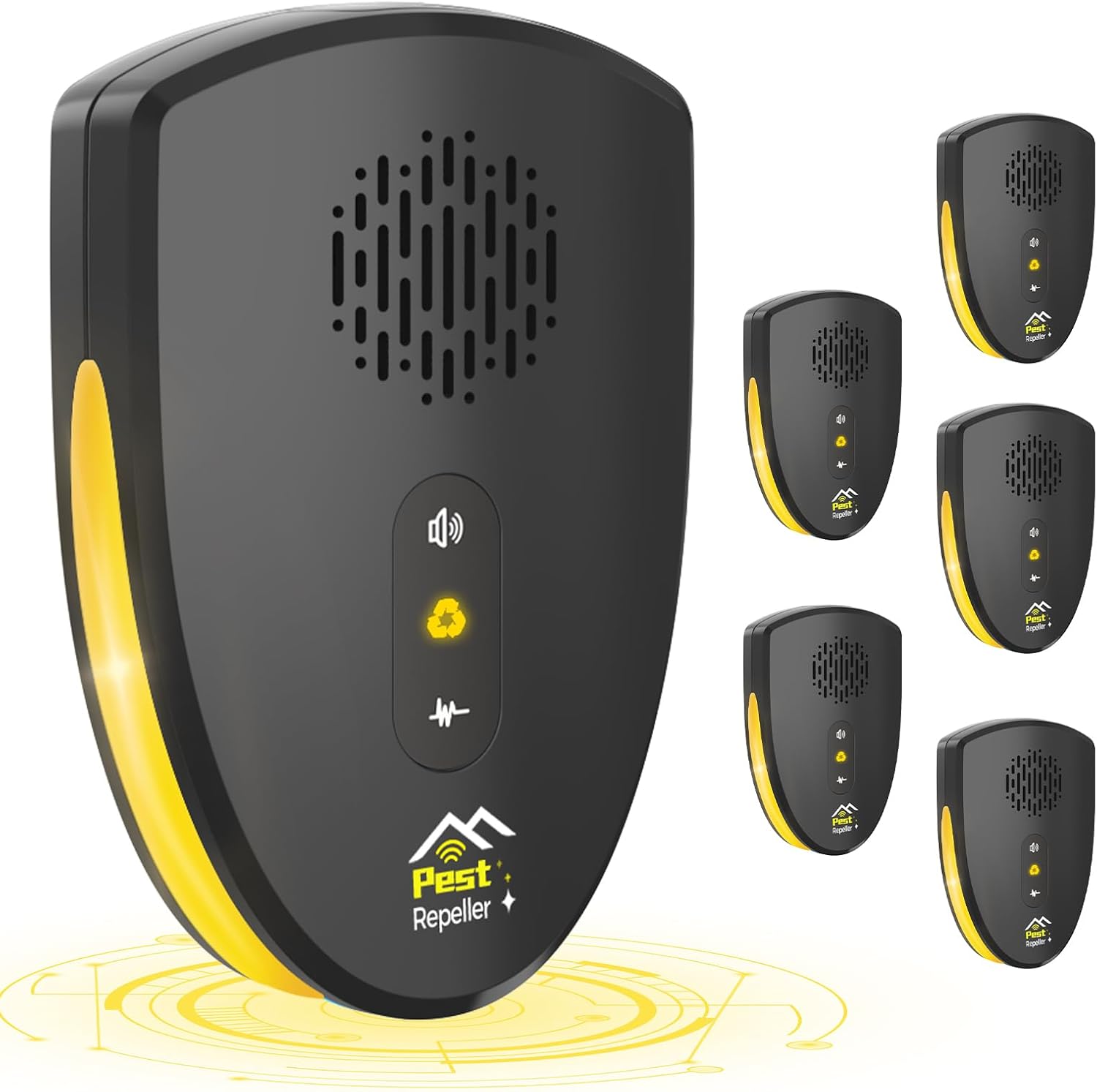
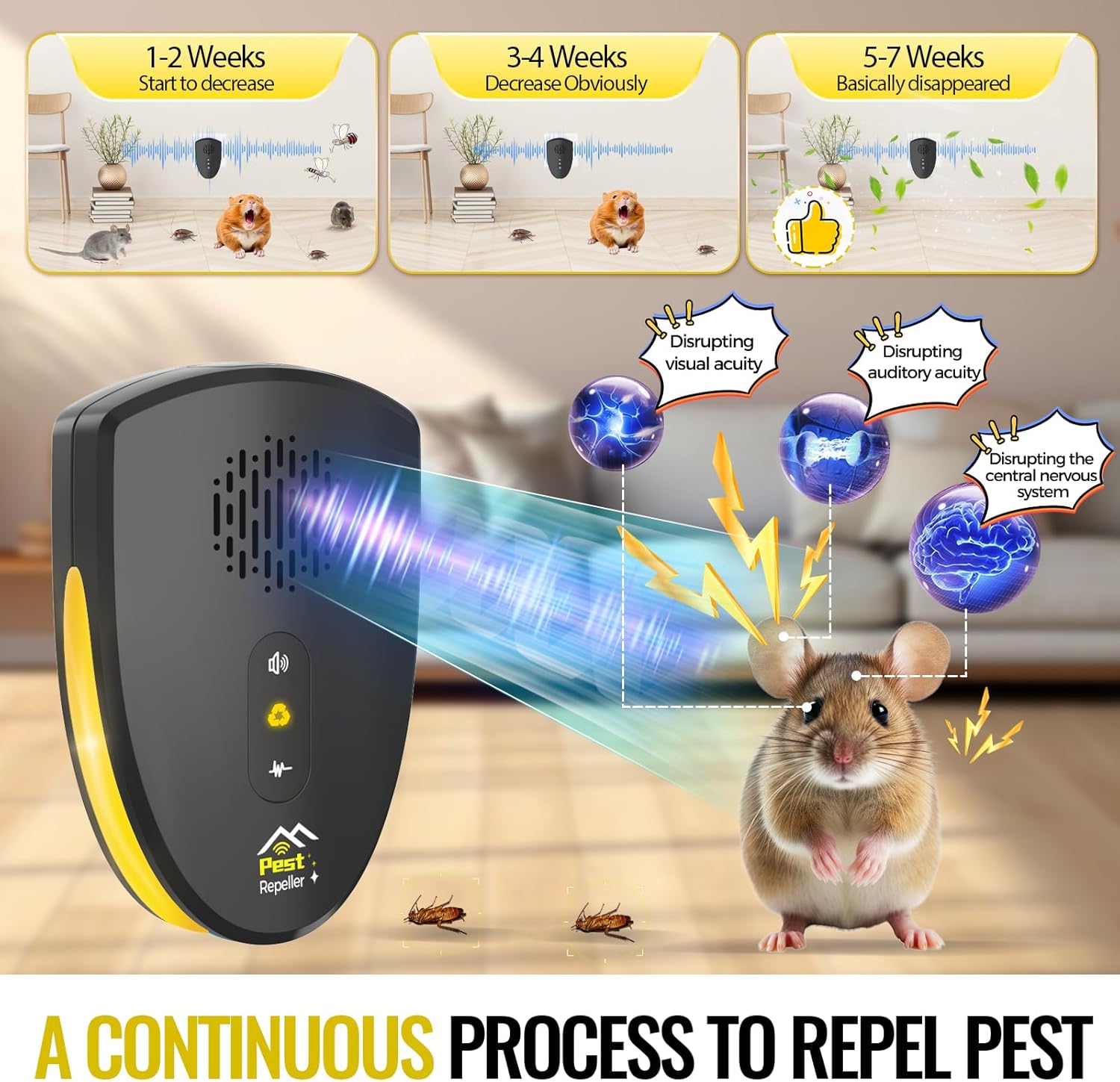
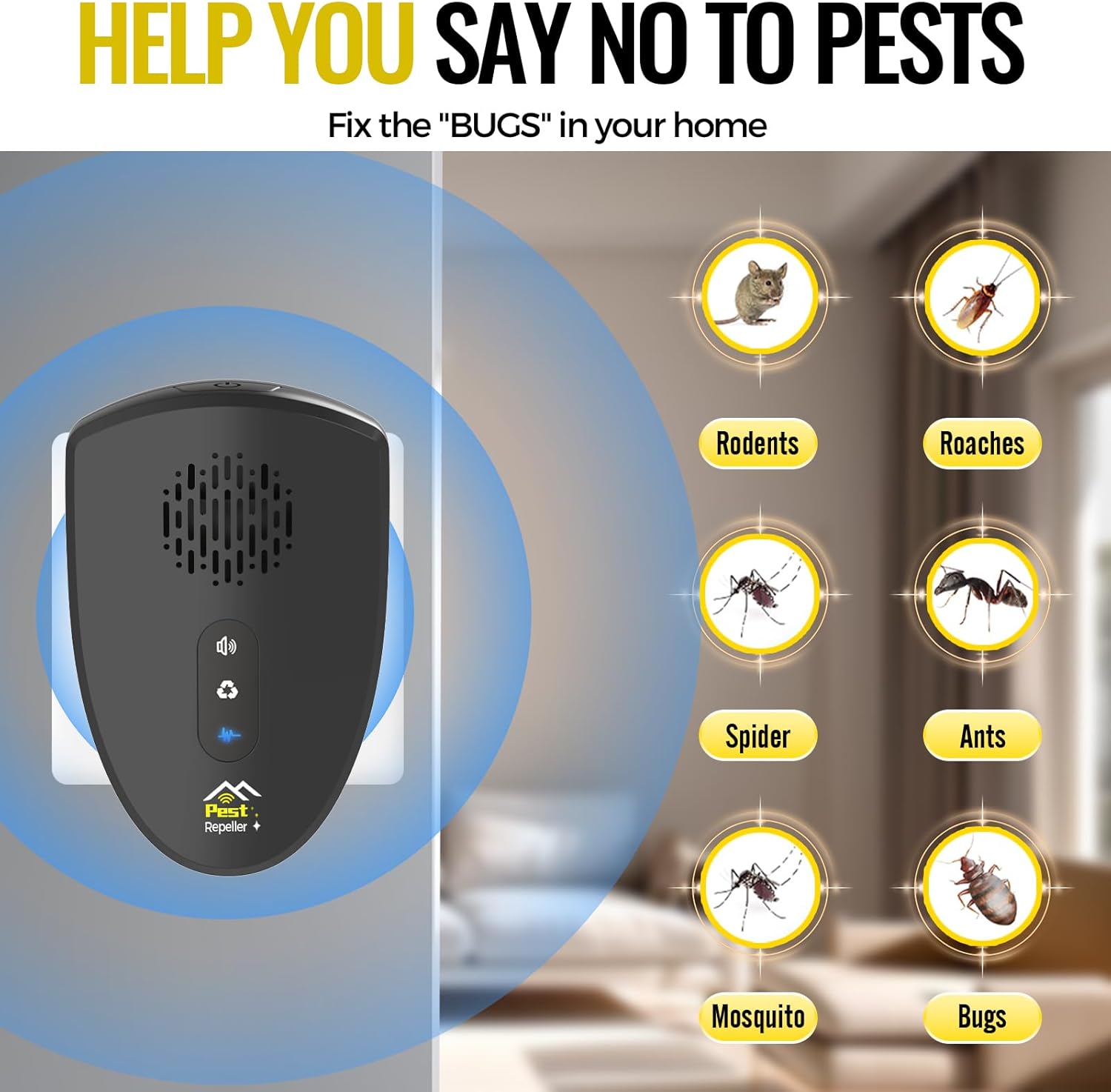
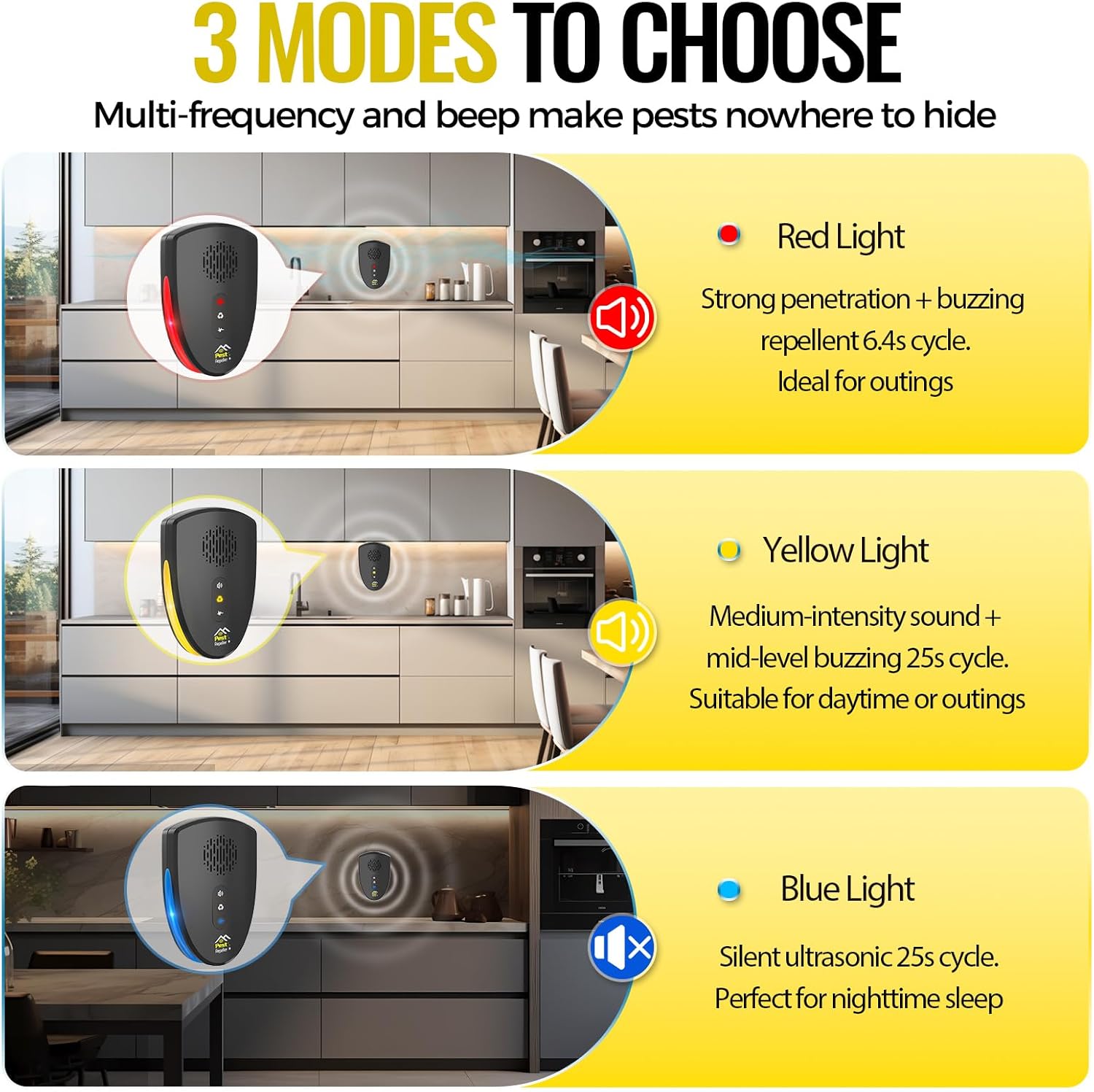
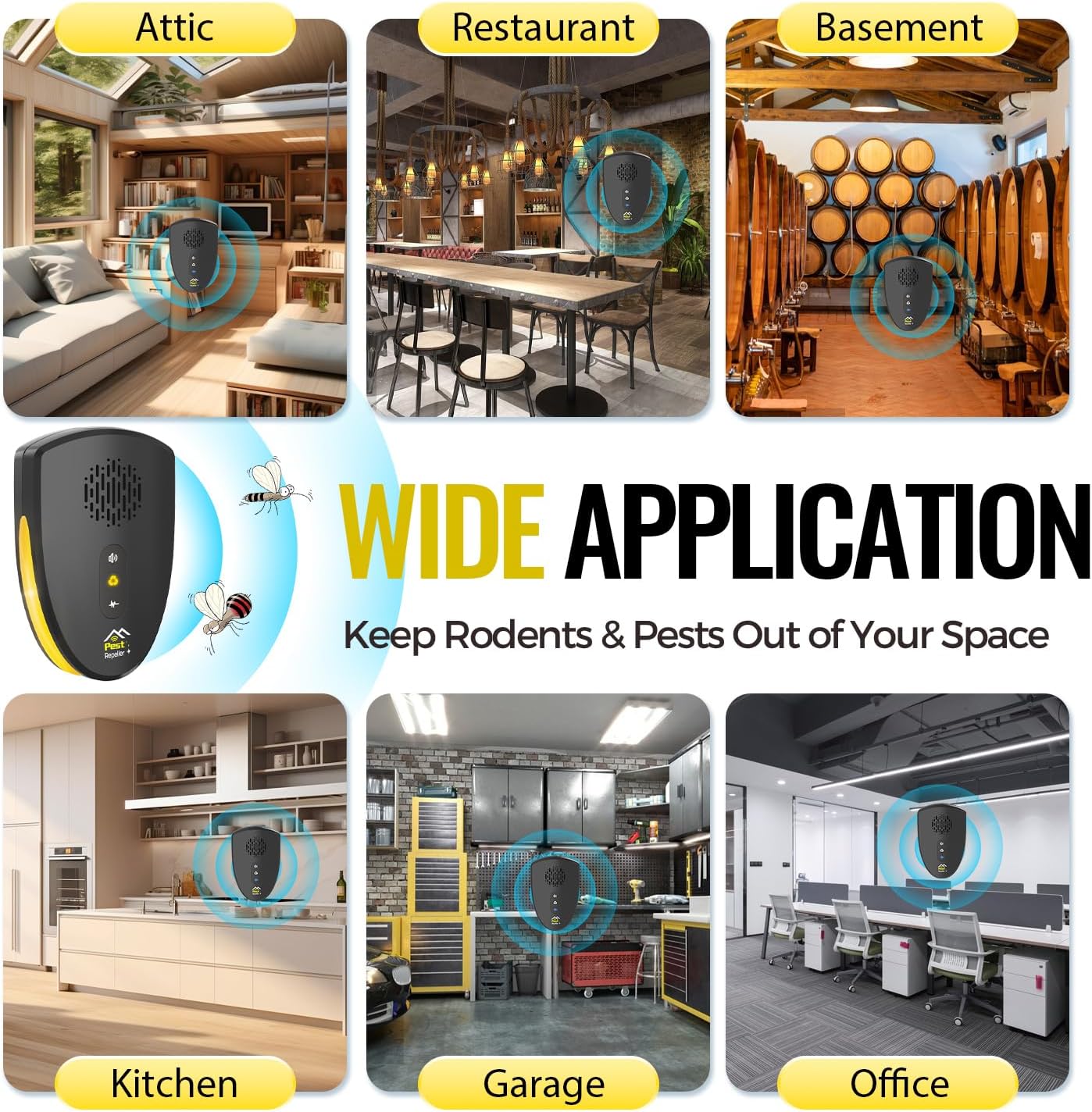
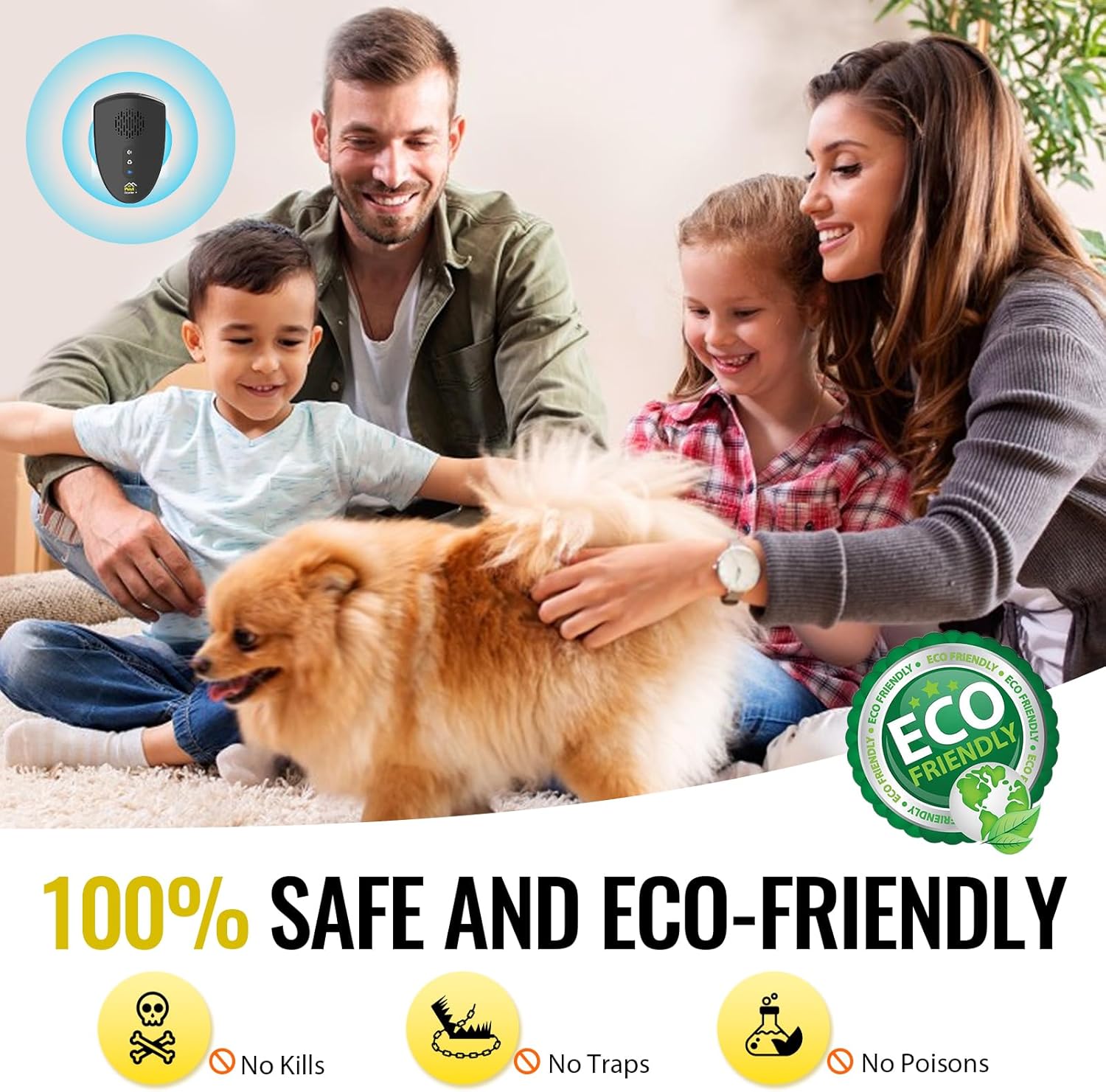
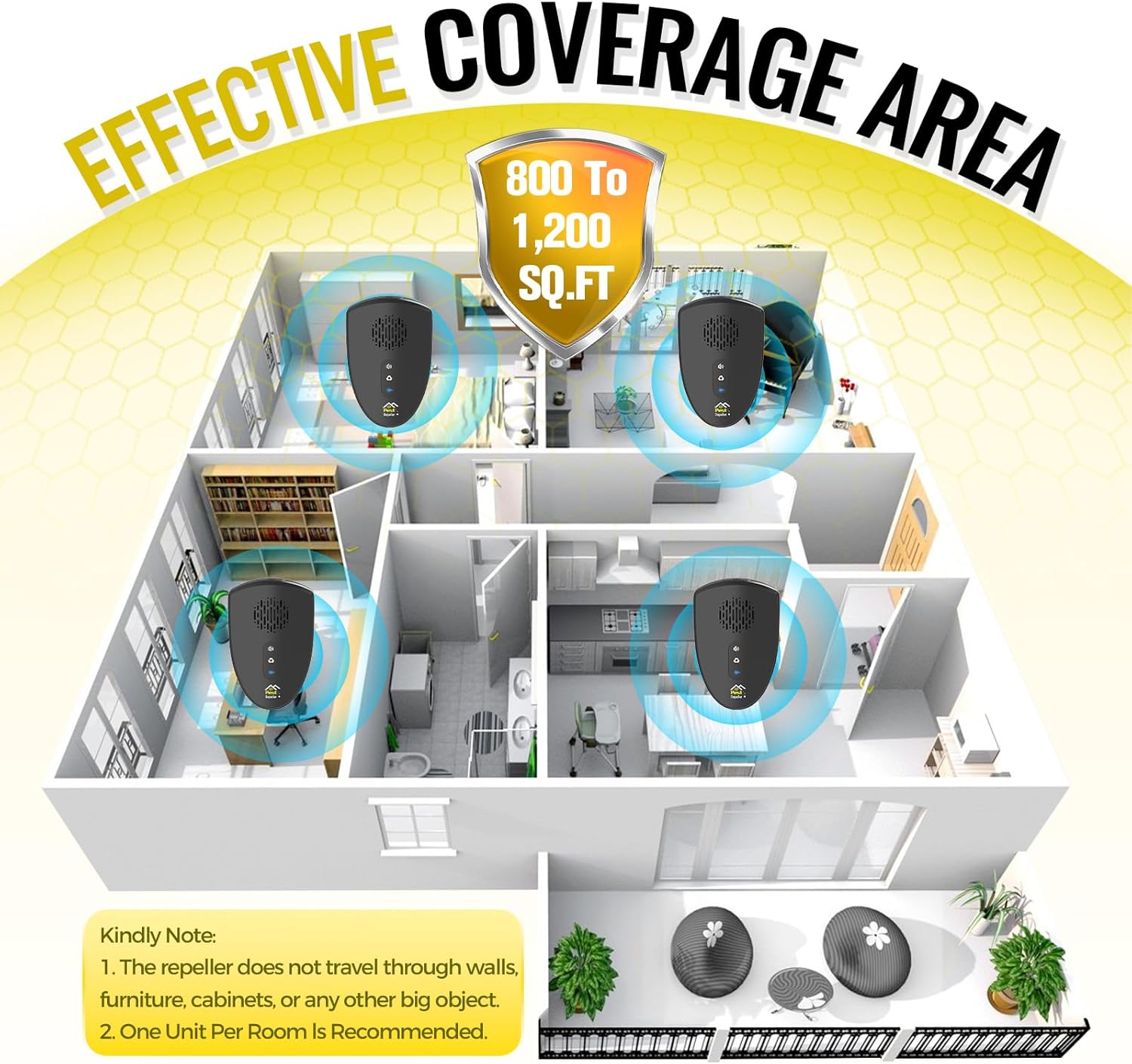
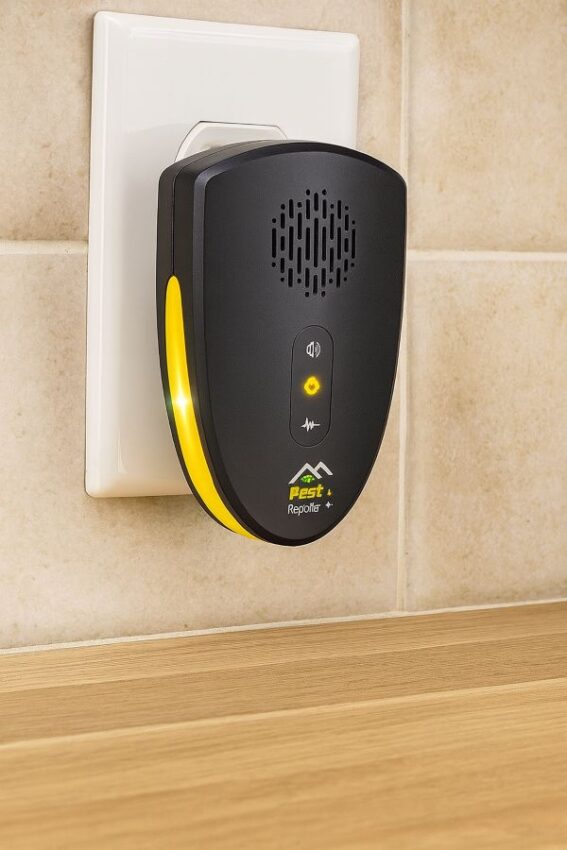
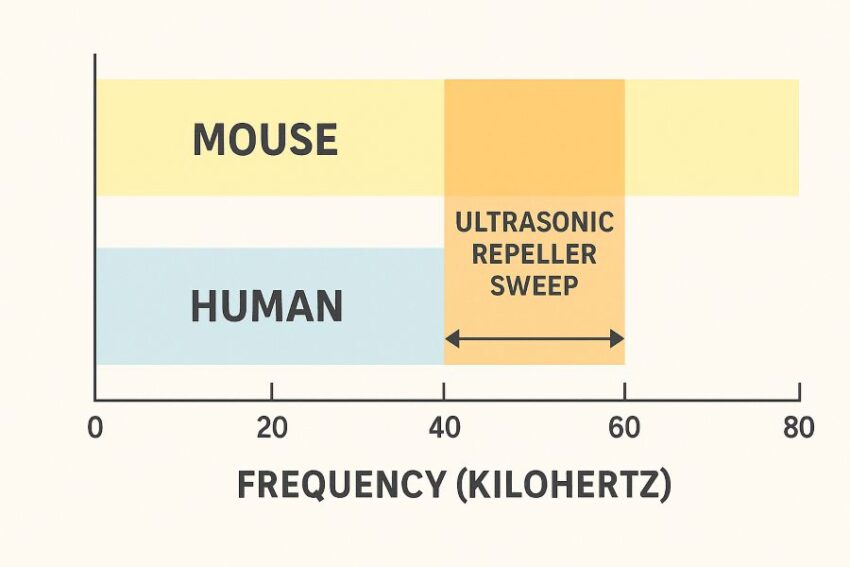
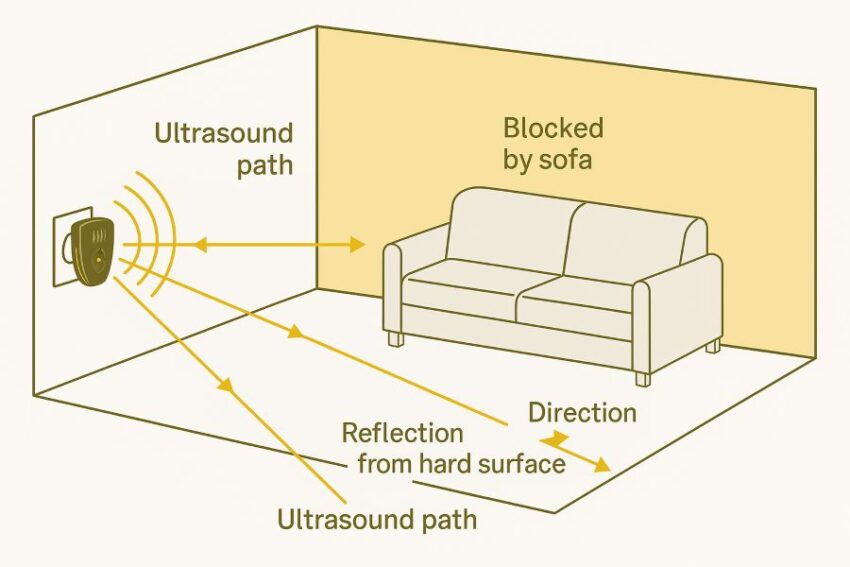
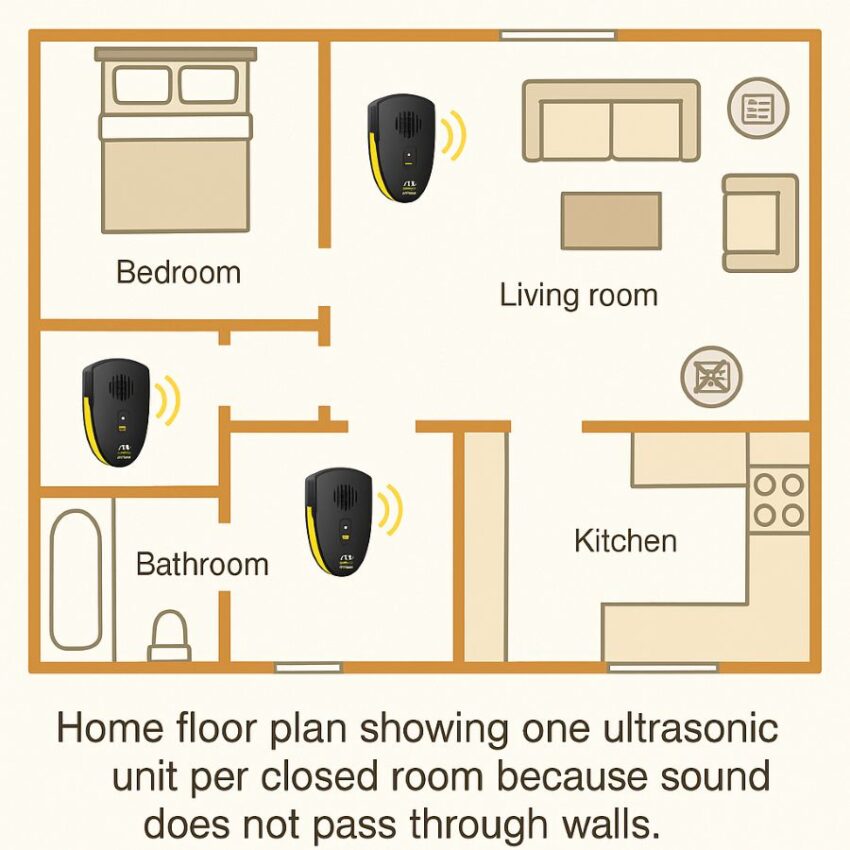
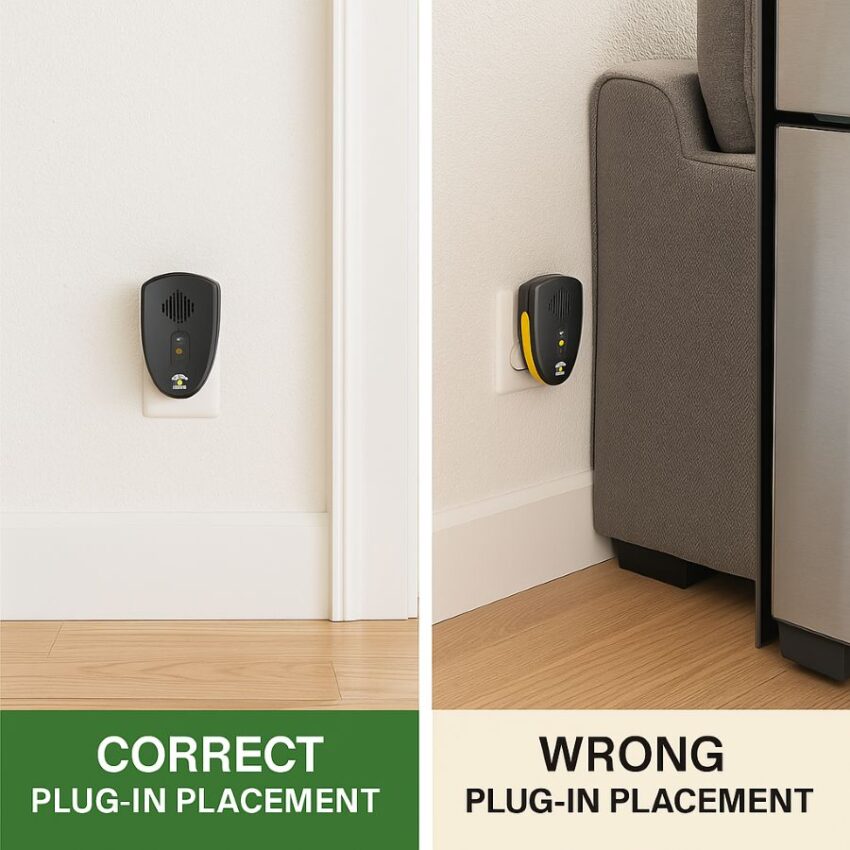
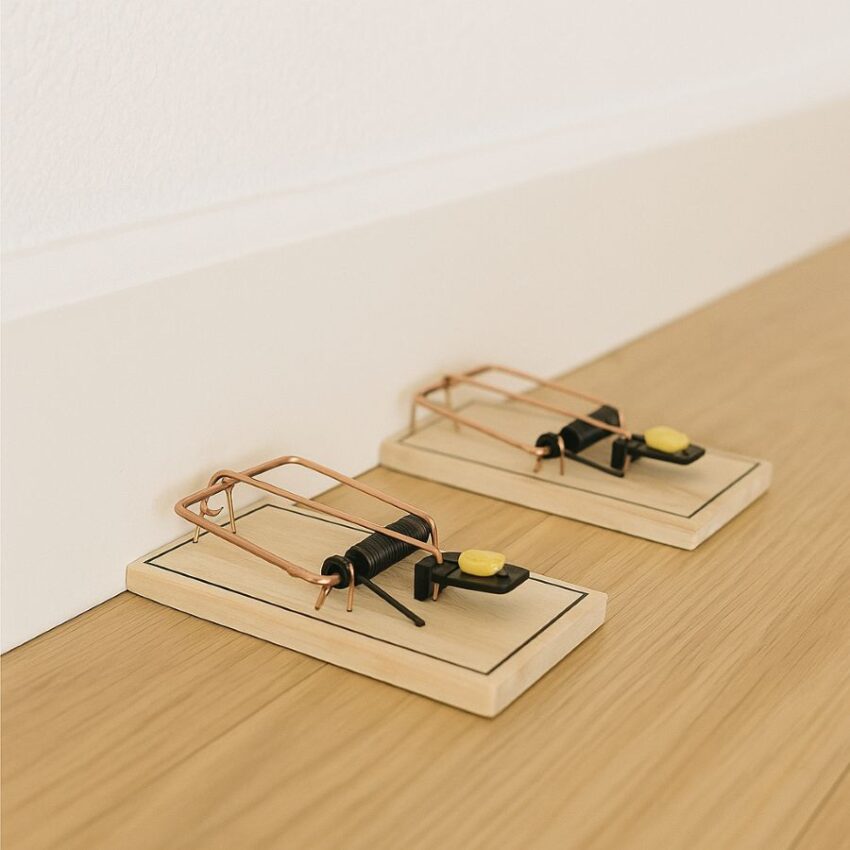
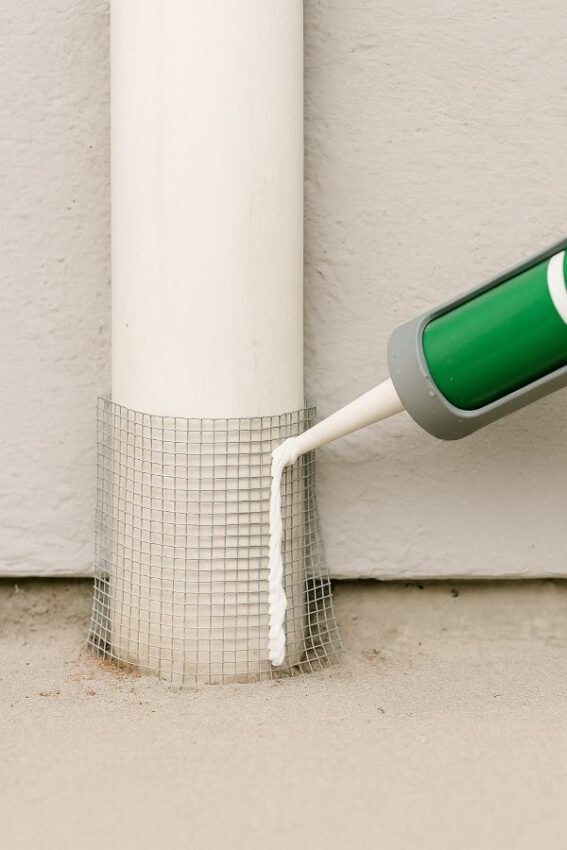
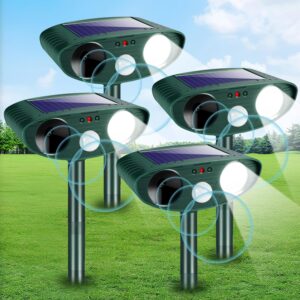
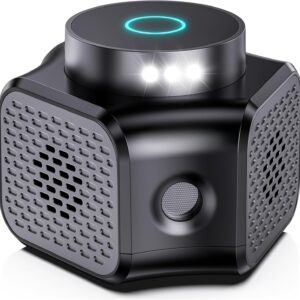
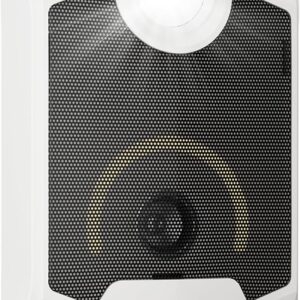
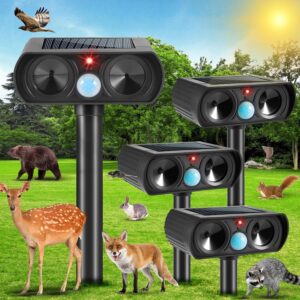
Reviews
There are no reviews yet.